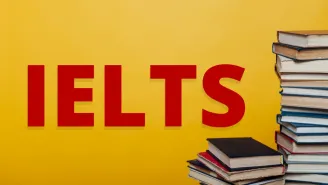Classifying Societies Reading Passage
Types of Societies Reading Passage
Paragraph 1
Despite the fact that humans have created a wide variety of societies throughout history, sociologists and anthropologists typically distinguish between them based on how unequally access diverse communities within a society have to perks like resources, prestige, or power. They typically distinguish between four basic types of societies. Clans, tribes, chiefdoms, and states are ranked from least to most socially complex.
Paragraph 2
Clan
These are small-scale hunter-gatherer cultures that typically have less than 100 members and travel about seasonally to take advantage of wild (undomesticated) sources of food. This category includes the majority of still-existing hunter-gatherer societies, including the Hadza of Tanzania and the San of southern Africa. Members of a clan are typically kinsmen who are related by marriage or descent. Clans don't have official leaders, thus there aren't any obvious social or economic divisions among their members. Due to the fact that clans are made up of dispersed bands of hunters and gatherers, the majority of their locations are seasonal camps as well as other, more specialised and smaller sites. They include work sites, where tools are created, kill or butchery sites, where large mammals are slaughtered and occasionally butchered, and other such areas. Such a group's base camp may show signs of very poorly constructed homes or temporary shelters, alongside the remains of residential occupation.
Paragraph 3
Tribe
They usually number and over a few thousand people, are typically larger than nomadic hunter-gatherer communities, and rely heavily on domesticated animals and cultivated vegetables for their diet and livelihood. Although they tend to be nomadic farmers with a completely diverse, mobile economy based on the intensive exploitation of animals, they are typically established farmers. These civilizations typically consist of several different groups that are connected to one another by familial relationships. Despite the fact that some tribes have representatives and even a "capital" or seat of government, these representatives lack the economic foundation required for the efficient utilisation of Tribal communities typically consisting of villages or settled agricultural homesteads. It is typical of the area that no one settlement predominates over the others. Instead, the archaeologist discovers proof of solitary, continuously inhabited homes or continuously inhabited settlements. The original farms in the Danube valley in Europe were made up of a group of free-standing homes, much like these settlements. Or they could be grouped together with clusters of buildings, such as the pueblos in the American Southwest and the historic farming community or small town of (catalhoyuk in contemporary Turkey).
Paragraph 4
Chiefdom
They work on the ranking principle, or the idea that people have different social positions. A scale of prestige is used to rank the lineages, and the senior lineage—and thus the society in its entirety—is led by a chief. A lineage is a collection of people who claim similarity. There is no real class division; prestige and rank are decided by how strongly one is associated with the chief. The chief's job is very important. Locals frequently specialise in handicrafts, and surpluses of both of these and foodstuffs are periodically paid as a courtesy to the chief. They are used by him to keep up his retainers, and he can also distribute them to his subjects. The chiefdom typically has a centre of power, which is frequently home to temples, the chief's and his retainers' dwellings, and craftsmen . The population of chiefdoms varies widely, although the average range is between 5000 and 20,000 people.
Paragraph 5
Early state
They maintain many of the characteristics of chiefdoms, but the ruler (who may be a king or occasionally a queen) has the express right to enact laws and to enforce them using a standing army. Society is now split into various groups and no longer solely rests on blood bonds. The lowest classes are made up of agricultural labourers and the impoverished urban residents, followed by craft specialists, clerics, and members of the ruler's family. The duties of the ruler are frequently distinguished from those of the priest: palace and temple. The society is seen as a realm controlled by the royal family, inhabited by tenants, and subject to taxation. A bureaucratic administration of officials is located in the central capital, and one of its main responsibilities is to collect money (typically in the form of taxes and tolls) and give it to the government, army, and craft specialists. To support these fundamental services, many early nations created intricate redistribution schemes.
Elman Service's and William Sanders' and Joseph Marino's relatively straightforward social typology is open to criticism, thus it shouldn't be applied carelessly. But, using words and thus concepts is necessary if we are to discuss early cultures. The types of services offer a helpful framework for structuring our thoughts.
Classifying Societies Reading Questions & Answers
Discover exciting and informative IELTS reading answers about Classifying Societies.
1. The economic status of clan members is generally similar.
2. A tribe's farmers cultivate a variety of plants.
3. In a tribe, a single settlement is more significant than all the others combined.
4. The amount of land a person possesses determines his rank inside the chiefdom.
Classifying Societies Reading Answers with Explanations (1-4)
Type of question: True/False/Not Given
In this task, you are given a set of statements. Based on your understanding of the passage, you aim to identify the nature of the given statement and write the correct answer.
The statement is
TRUE if the statement agrees with the information
FALSE if the statement contradicts the information
NOT GIVEN if there is no information on this
How to best answer the question
- Read the given statements carefully and memorise the keywords
- With the keywords help, find the passage's references, which will help you decide whether the given statement is true or false.
- If the information is not there in the passage, then your answer will be not given
Reference
From paragraph 2: “Clans don't have official leaders, thus there aren't any obvious social or economic divisions among their members.”
Explanation
Clans lack official leaders and are often based on kinship ties, which suggests that there isn't a rigid hierarchy or significant economic disparities among members. Therefore, the statement that the economic status of clan members is true.
Reference
From paragraphs 1 to 5: “Despite the fact that humans have created a wide variety of societies throughout history,.........The types of services offer a helpful framework for structuring our thoughts.”
Explanation
The answer is not given as no information is provided about the tribe's farmers cultivating various plants.
Reference
From paragraph 3: “It is typical of the area that no one settlement predominates over the others.”
Explanation
The answer is false because, in the area under discussion, no single settlement reigns supreme over the others. This suggests that the common notion of a tribe being dominated by a single settlement is flawed. Instead, the region is characterised by a more egalitarian power distribution and influence among its various settlements.
Reference
From paragraph 4: “They work on the ranking principle, or the idea that people have different social positions. A scale of prestige is used to rank the lineages, and the senior lineage—and thus the society in its entirety—is led by a chief. A lineage is a collection of people who claim similarity.”
Explanation
The passage clarifies that the statement about land determining one's rank within the chiefdom is false. The society follows a ranking principle based on a scale of prestige, with the chief leading the senior lineage. Ancestry is more important than the possession of land in evaluating the chief's strength.






